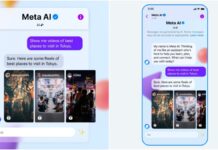The Massachusetts Institute of Technology (MIT) is a private research university in Cambridge and recently the researchers of MIT developed a technique that gives life to photographs which do not require any special camera and lets you touch and move objects.
MIT Researchers Create Video That Lets You Touch And Move Objects
Recently we talked about the 3D movie without glasses, an idea that MIT is a more direct way to enjoy these projections by not having to put us over anything. But another team of this institution has gone beyond looking for a real interaction with videos, namely that they react with our “touch”.
This is Interactive Dynamic Video (IDV), a technique that has developed a team of CSAIL ( Computer Science and Artificial Intelligence Laboratory ) with which you can move items that appear in the video or at least see how these would move if the touch was real and not virtual. The key is to shake them because both the techniques and the tools with which they work are rather simple and could be applied to clips from YouTube or augmented reality games like Pokemon GO.
In recent years we have few examples of great work in the industry with CGI special effects and other techniques. These typically require many hours of work (and a lot of investment) and are based on creating objects and virtual environments either wholly or partially to achieve the integration of 3D objects. Here we have discussed some cases such as Game of Thrones.
This may have application in creating simple special effects and especially economic, but at MIT there are no strangers to the latest fashions and may have given a reef: the merger with augmented reality game Pokemon GO.
But in addition to entertainment, the research team sees potential applications in architecture and can create models of the movement of buildings and other structures to events like an earthquake. Davis also explains that it may be useful in stress tests for objects and not forgetting virtual reality. As we were talking about a hypothetical application in Pokemon Go, a realistic interaction that could be applied in viewing videos in virtual reality.
So far several institutions supported to carry out the project, see if Niantic, Oculus or other companies put interest and in the future we can have another level of interaction in games or multimedia entertainment.



